Buying a suit online is easy enough, but buying a suit that fits well and looks good is a little more complicated. Though tailoring is an art, it's also a science of sorts, with endless variables and numbers to input and weigh up.
"It is going to be a lot easier for someone that already has quite a few suits in their wardrobe than it is for someone who is a tailoring novice," says Mats Klingberg, founder of one of London's most sophisticated menswear stores, Trunk Clothiers. "But even so, it's definitely something that everyone should consider."
The key to ordering something that won't leave you looking like you've raided your dad's wardrobe (or worse, your teenage brother's) is to conduct a little research before you make a single click. To help, we've compiled a comprehensive list of everything you need to know about buying a suit on the internet.
Ordering a suit without measurements is like driving blindfolded. The simplest way of finding yours is to measure an existing suit that you like the fit of. "If the garment you're looking at has similar measurements to one of your existing suits, you can be pretty confident that it will fit," Klingberg explains. Most retailers have instructions for how they measure their garments, but in any case these are the general rules.
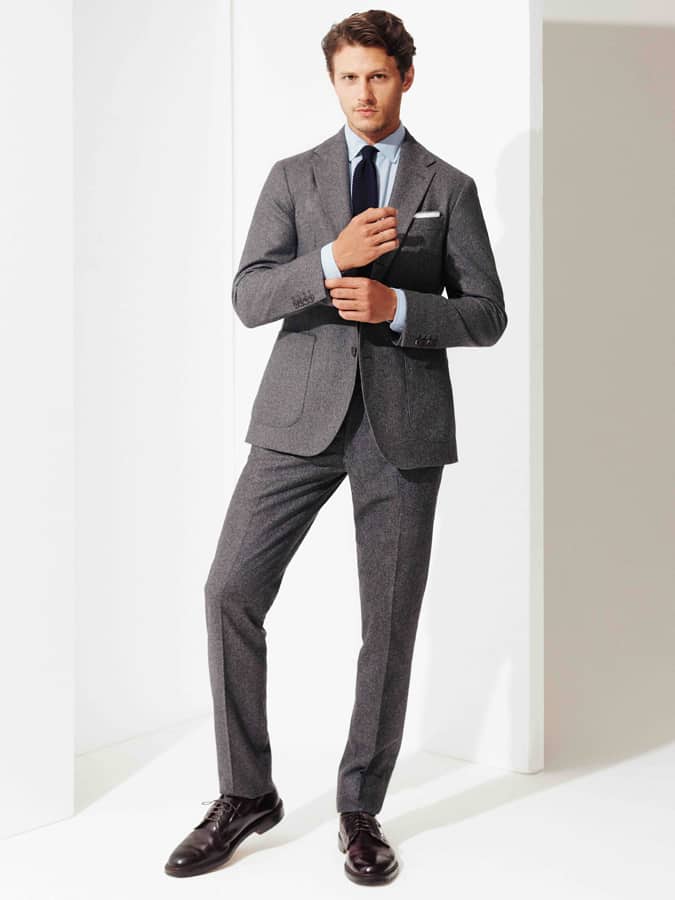 Trunk Clothiers
Trunk Clothiers
Chest: Lay the jacket flat with all buttons closed and run a measuring tape from armpit to armpit. If you don't have a jacket that fits well, have someone measure around the broadest part of your chest (usually around nipple height), under your arms and level with the ground. Keep a finger between the tape and your body to allow for comfort.
Waist: Take a pair of trousers that fit well (jeans or chinos will work just fine) and lay them completely flat. Measure the waistband from edge to edge, and double the result to get your waist measurement. Otherwise, wrap the tape around the part of your body where your waistband usually sits.
Inseam: Lay a pair of existing trousers flat and measure the distance from the fork of the trousers (where both legs meet) to the hem. If you don't have a pair with the right inseam, stand straight-legged and measure the inside of your leg from your groin to where you want your trousers to end (between your ankle and the top of your shoe sole).
Frustratingly, suit sizes aren't universal. Most brands will use the UK/US sizing standard which just takes the chest measurement in inches, meaning if you have a 38" chest, a size 38 jacket should fit you perfectly.
The same goes for trousers, which are sold by waist size. However some websites will use European (marked EU) or Italian (IT) sizing, which take half of the chest measurement in centimetres.
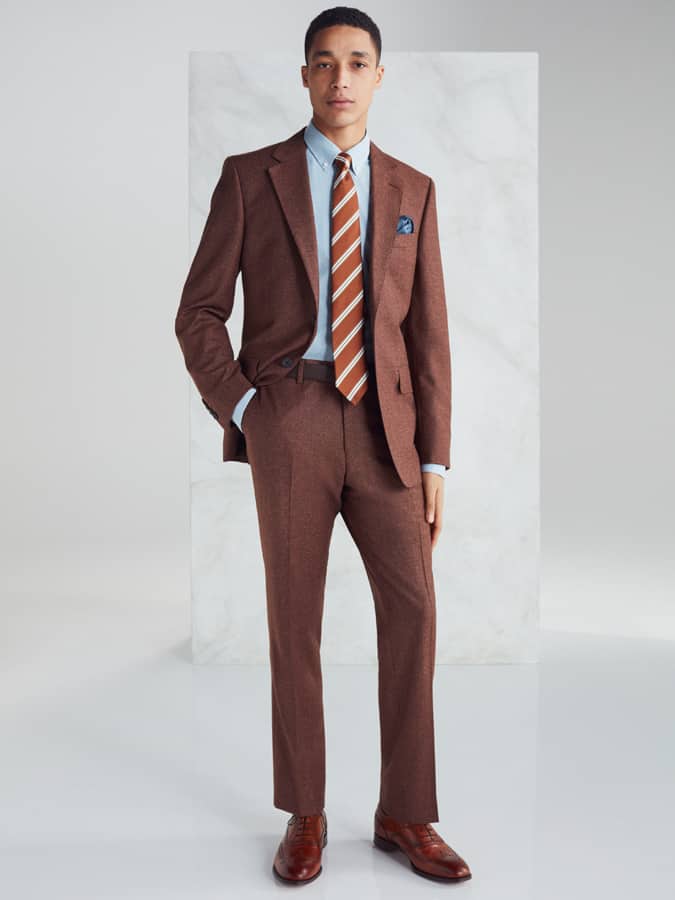 Gieves & Hawkes
Gieves & Hawkes
An easier way to find an EU/IT jacket size is to add 10 to your UK/US size, e.g. a man with a 40" chest should order an EU 50 jacket. For trousers, add 8 to your UK/US size to get your EU size, or 16 to get your IT size (e.g. if you have a 32" waisst, order an EU 40 or an IT 48).
"For something to look good and feel good, it simply has to fit," says Klingberg. "When shopping online, it's really important to look at photos closely and to read product descriptions carefully to see what they say about the fit of a suit, whether it's slim, regular or classic for instance." If you're already in possession of a few suits, check the labels of one that you like. If not, here are the basics.
The leanest of all fits, a skinny fit jacket will cut close around the chest and nip in at the waist, and will come with narrow tapered trousers. The best skinny fit suits are those that are simple: single breasted with one, two or three buttons and a narrow lapel. Generally, these work for men who are short or medium in height with a slim build.
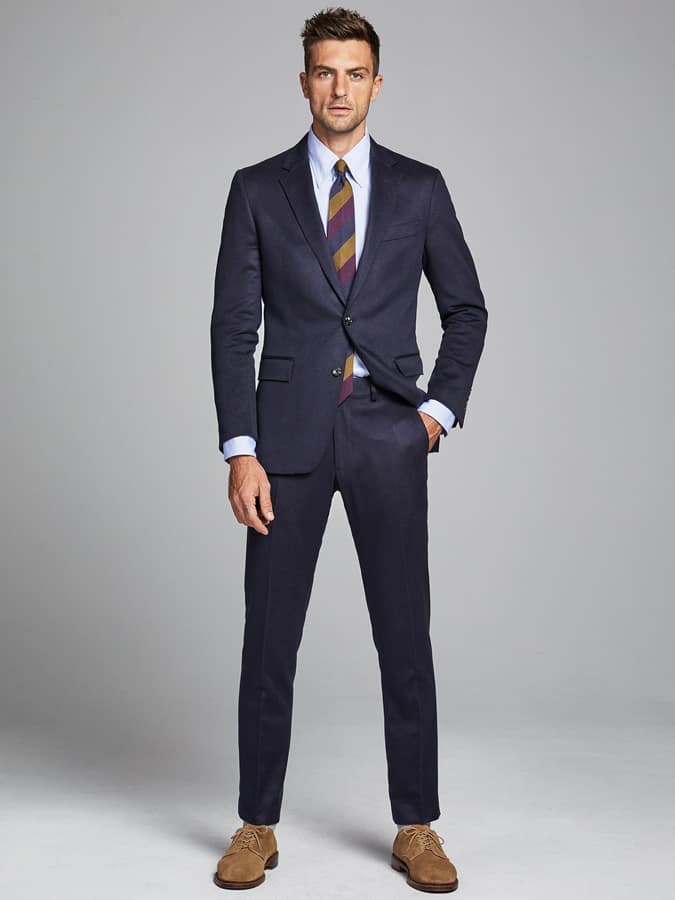 Todd Snyder
Todd Snyder
A slim fit suit is the most versatile of all, with a jacket closely tailored to the body and straight, narrow trousers. It looks great in either a single or double-breasted cut and is a better option for taller men who can look gangly in skinny fits, and for men of all heights who have a medium build.
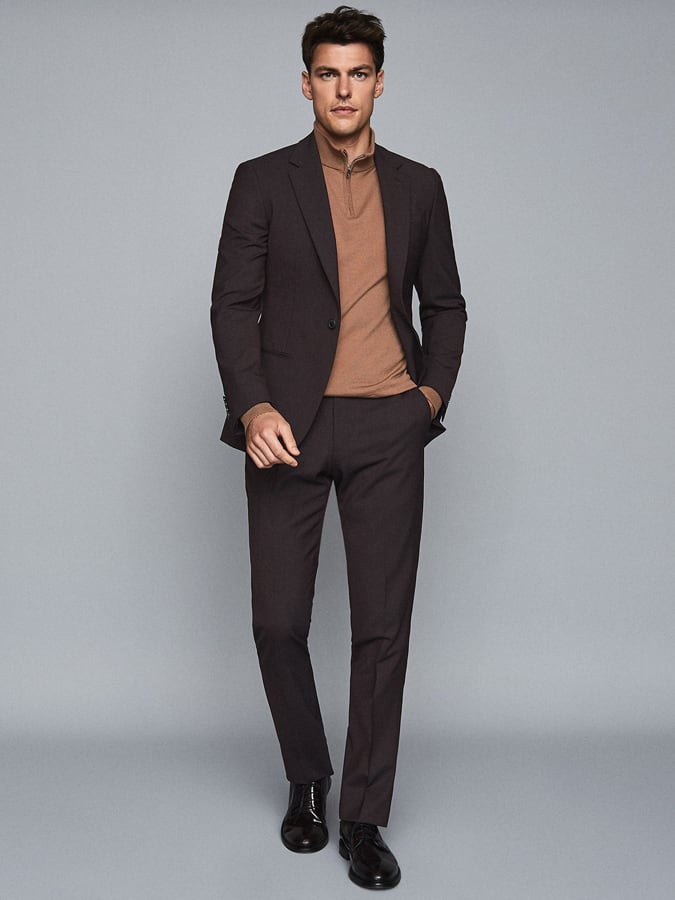 Reiss
Reiss
Sometimes labelled regular, a classic fit suit is cut wide around the chest and hangs straight at the waist, with generously cut trousers for a more comfortable fit. Stockier men will find a regular fit more flattering, but should stick to a two-button single breasted cut to keep it contemporary.
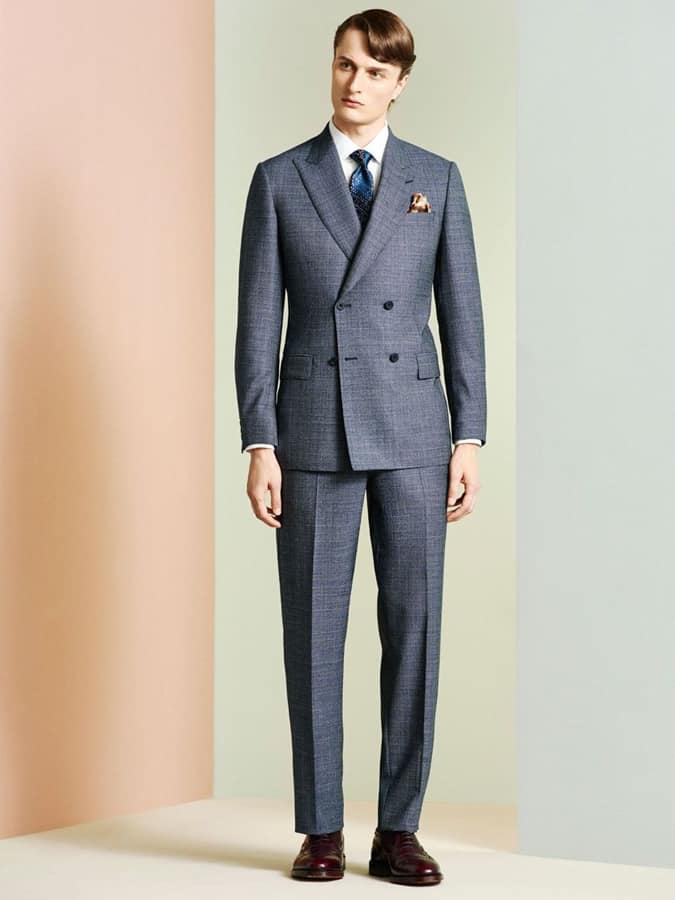 Richard James
Richard James
Tailors traditionally use a layer of canvassing or fusing along with padding at the shoulders to give a jacket structure. An unstructured blazer removes this rigidity and along with it much (but not all) of the formality, creating a softer garment that can be dressed up or down depending on the occasion.
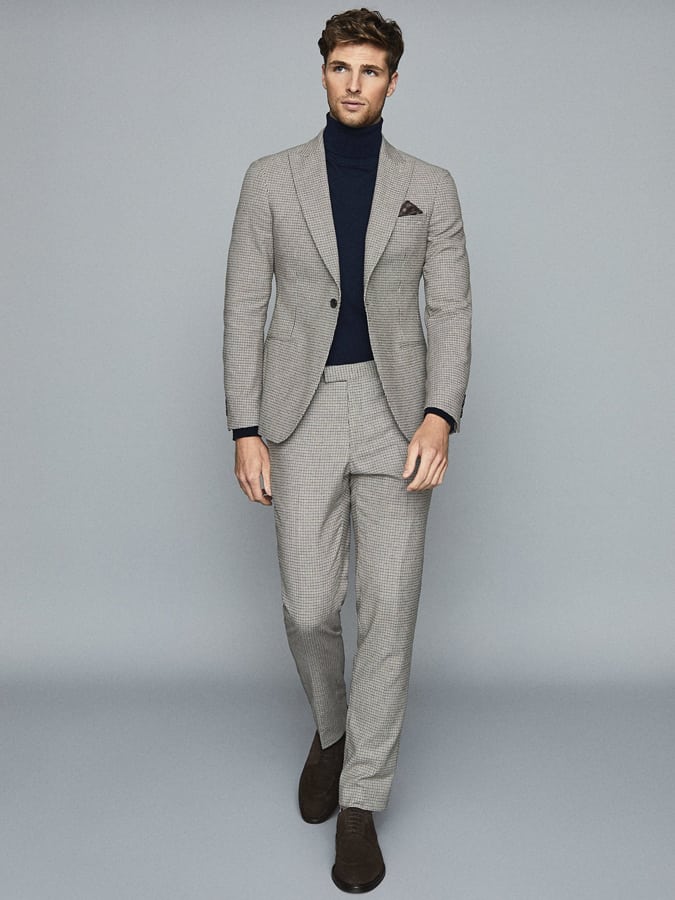 Reiss
Reiss
The look and feel of a suit is perhaps the trickiest thing to gauge when shopping online - how a fabric photographs under bright studio lighting isn't necessarily how it's going to look out in real life. "It's also important to consider that a heavy winter fabric might have a very different feel to it than a light summer fabric, even if the measurements are pretty much the same," adds Klingberg.
Wool: The traditional choice for tailoring, wool is soft, breathable and, if looked after, wears well with time. Look for a mid-weight wool (around 11-12 oz) which can be worn all year round whatever the occasion.
Cotton: Ideal for spring weddings, cotton suits are among the lightest and most breathable but have little stretch, meaning they're at their best when cut in a relaxed fit.
Linen: The most lightweight of all suit fabrics, linen is great for the warmer months but does have a tendency to crease easily. An unstructured linen suit is perfect for smart-casual dress codes, with structured linen-wool or linen-cotton blends working well for formal occasions.
Polyester: Any sub-£100 suit will likely be made of 100 per cent polyester. A synthetic fibre (and therefore the least sustainable option), polyester doesn't breathe in the way that natural cloths do, meaning it can leave you sweaty and uncomfortable.
Between this and its tendency to turn shiny with wear, it's best to avoid where possible, though polyester-wool or polyester-cotton blends are good value alternatives.
Reiss has long cornered the market for well-priced, well-made suits that are modern but not too trend-driven, all of which can also be ordered online with a few simple clicks. In terms of pricing Reiss is at the costlier end of the high street, but you get what you pay for.
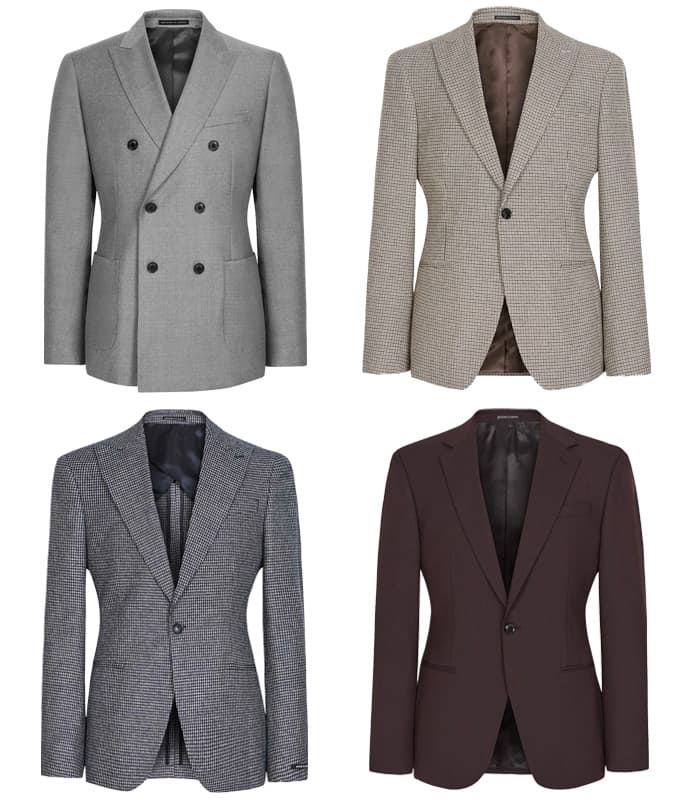
A relative newcomer to the tailoring game, Suitsupply's collection ranges from classic to conversation-starter. The Amsterdam-based brand does a decently (and affordable) starter suit for those looking to build their collection, and offers a custom option that's significantly cheaper than a trip to the tailor.
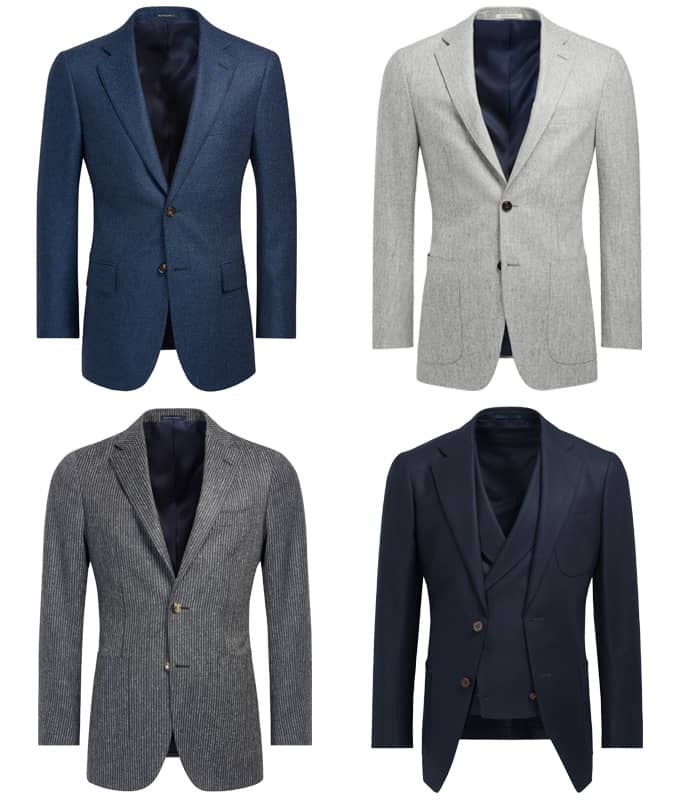
If you're looking to drop a serious wedge on designer tailoring, Mr Porter is the site for you. Stocking a range of brands from Tom Ford to Gucci, it has an unbeatable 24/7 customer service team that can advise on everything from size to which colour shoes to wear with a suit.
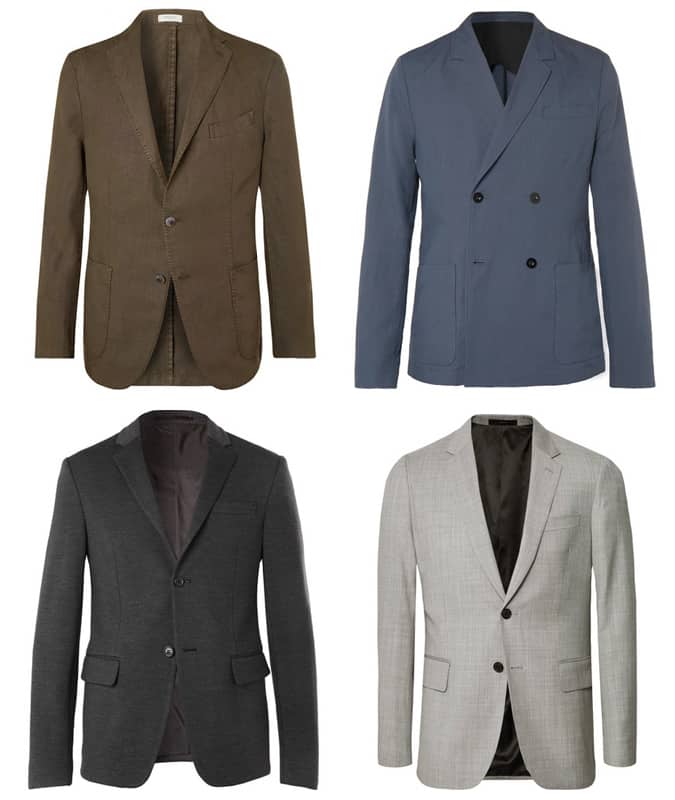
Not only does M&S produce some of the finest jelly sweets known to man, it also does a surprisingly good line in tailoring that's excellent value for money. Definitely one to check out if you're heading into your first corporate job, or have a shotgun wedding.
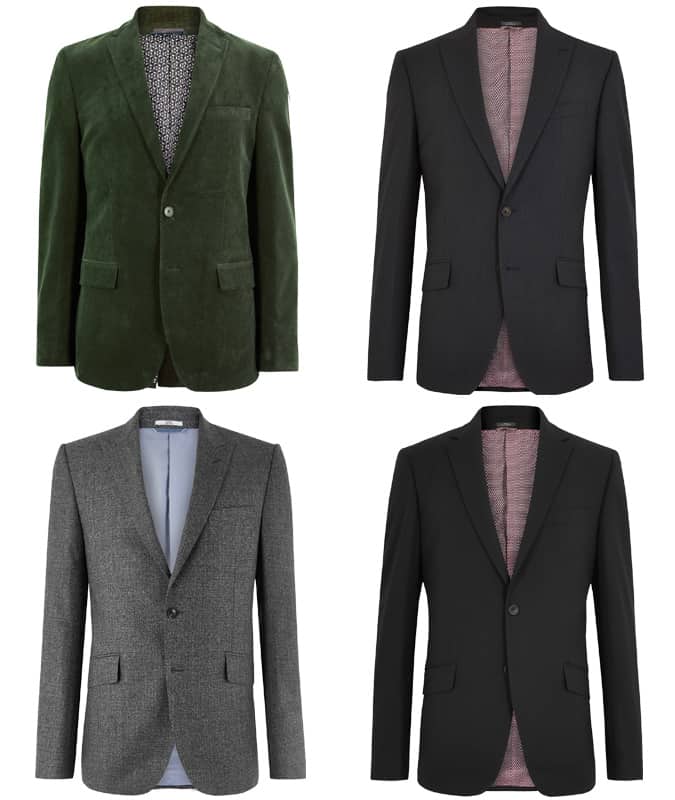
Owned by the same world-conquering conglomerate as Zara, Massimo Dutti does a fine line in contemporary, fashion-forward suits that look much more expensive than they actually are, ideal if you're entering the 'six weddings-a-year' phase of your life.
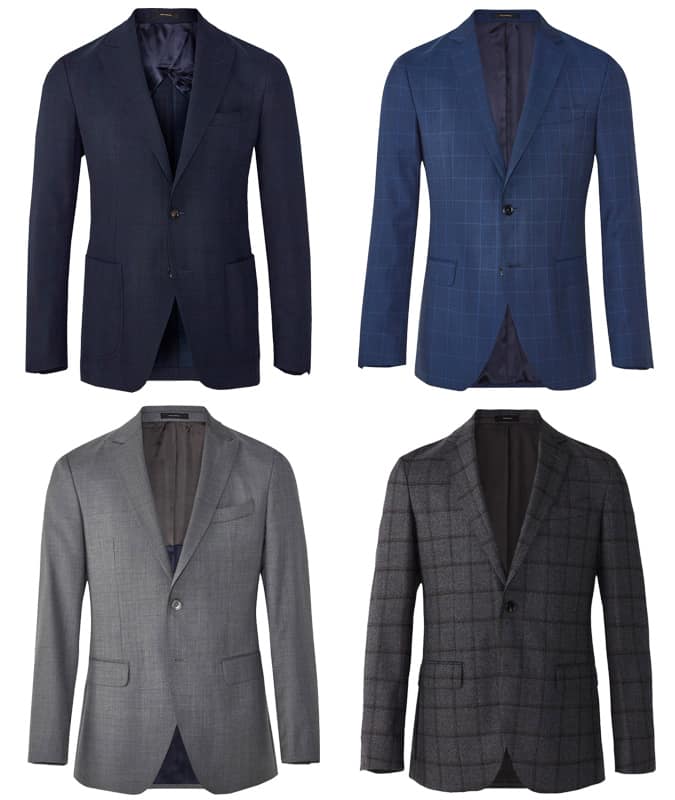
Make sure that you know exactly how long you have to return any suits that don't fit or that you don't like. Legally speaking, retailers have to give you at least 14 days to do this, but in some cases you may have to cover the return postage yourself.
Hopefully any suit that you order after reading this guide should fit pretty well, but off the rack tailoring (ie suits that aren't made-to-measure or bespoke) can always be improved. Jacket sleeves and trouser legs are cheap and easy to alter and make a massive difference.
It certainly pays to spend some time reading up on the basics of tailoring. There are different lapels, types of pocket, shoulder styles and countless other touches which can transform the look of a suit.
Suits are traditionally sold in drop six, which means there is a six inch difference between the jacket size (chest) and trouser size (waist). If your measurements don't line up with this, look for suits that are sold as separates.
All trousers have a shelf life and will eventually wear thin at the seat and/or groin. Buying a spare set means that you won't need to buy a whole new suit when that time comes (as it's unlikely you'll be able to get them when the time comes).